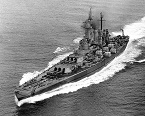JeffroK
Posts: 6391
Joined: 1/26/2005
Status: offline

|
quote:
ORIGINAL: AW1Steve
WOW....just doing a little research says we'd need to do an a lot to even begin to nail this down. It appears that the Army specs required the plan to be able to preform torpedo attacks from the begining. Supposedly the B-26a could carry an internal fish, but I can't find which model.The B-26's at Midway , from the 22nd and 35th BG's were B-26B's , which had longer wings and bigger tails for more stability and better handling.
I've found an account where VT-13 tested Mk 13's , operating under extremes succesfully , such as 280kts (which must have been quite a trick in a TBM/TBF, requiring a dive!) and as high as 800 feet! (That is to say , operating , working,functional torpedos. Obviously you could drop from 20,000 if you don't mind the fish hitting the water and turning into a million parts!). 
My gut feeling is that B-26's , with well trained crews , could do this , but the USAAF really wasn't that hot on the idea. And the USN wasn't all that hot on landbased naval air strike forces. I would expect that the USMC , if anyone , would take this and run with it.....
I dont see where the original specs asked for torpedo capability, given the split bomb bay carring an internal torp would be awkward.
The B26B was capable of carrying torpedos. http://www.joebaugher.com/usaf_bombers/b26_4.html
The B version introduced self-sealing fuel lines and a rearrangement of various internal equipment items. The engines were switched back to R-2800-5s. The large propeller spinners were deleted. The oil cooler air scoop under the engine cowling was enlarged. Torpedo racks underneath the fuselage were fitted as factory-installed equipment. Fuel supply included two 350-gallon main fuel tanks in the wings, two 121-gallon auxiliary tanks, and up to four 250-gallon bomb bay ferry tanks, for a total capacity of 1962 gallons. Normal bomb load consisted of two 2000 lb or 1600 lb bombs, eight 500-pound, sixteen 250 lb, or thirty 100-lb bombs. Maximum short-range bombload was 5200 pounds, which was seldom carried. This could be two 1600-lb bombs plus a 2000-pound torpedo on the external rack.
Early models of the B-26 had two separate bomb bays, but the rear one was only used infrequently for light loads in the South Pacific. Eventually, the rear bomb bay racks were discontinued altogether, followed by the deletion of the rear bomb bay doors and actuating mechanisms as well. The space and weight factors had become too critical, and the space was more valuable as a gunner's station after two flexible 0.50-inch machine guns were installed in the waist window area and ammunition storage boxes were installed for the tail and waist guns. Provisions for the two rear bay tanks were deleted from the B-26B-25-MA and later blocks.
Plus a bit about the widow maker reputation
http://www.joebaugher.com/usaf_bombers/b26_5.html
< Message edited by JeffK -- 7/13/2012 12:49:26 AM >
_____________________________
Interdum feror cupidine partium magnarum Europae vincendarum
|
 Printable Version
Printable Version





















 I tried to see if I could set up the plane so that torpedo's were optional. I set it to naval attack (1k feet). And in the editor I reclassified it as a torpedo plane. And I sent it to San Diego where the Air HQ was given 20 torpedos. No joy. So obviously there is more involved.
I tried to see if I could set up the plane so that torpedo's were optional. I set it to naval attack (1k feet). And in the editor I reclassified it as a torpedo plane. And I sent it to San Diego where the Air HQ was given 20 torpedos. No joy. So obviously there is more involved. 


 New Messages
New Messages No New Messages
No New Messages Hot Topic w/ New Messages
Hot Topic w/ New Messages Hot Topic w/o New Messages
Hot Topic w/o New Messages Locked w/ New Messages
Locked w/ New Messages Locked w/o New Messages
Locked w/o New Messages Post New Thread
Post New Thread